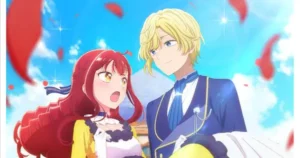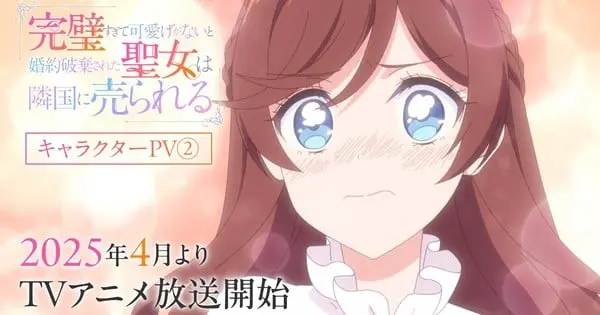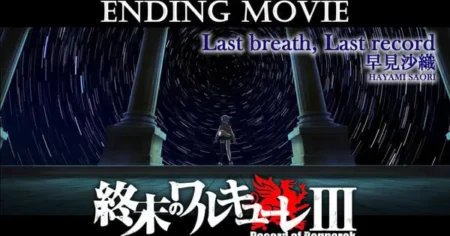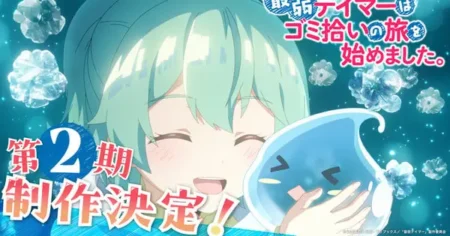The upcoming anime adaptation of Kōki Fuyutsuki’s light novel series, “The Too-Perfect Saint: Tossed Aside by My Fiancé and Sold to Another Kingdom” (Kanpeki Sugite Kawaige ga Nai to Konyaku Haki Sareta Seijo wa Ringoku ni Urareru), has revealed a new character video and additional cast members, heightening anticipation for its April 2025 premiere. The series, animated by TROYCA, promises a blend of fantasy, romance, and societal intrigue.
A Saint’s Journey: Plot Overview
Philia, the protagonist, is known as the greatest saint of all time, comes from a family that has produced saints for generations and is betrothed to the second prince, Julius. Unexpectedly, Julius cancels their engagement, deeming her “too perfect” and lacking in charm. As a result, Philia is sent to a neighboring kingdom in exchange for resources. Despite expecting mistreatment, Philia receives a warm welcome and utilizes her saintly abilities to protect her new home, erecting barriers against monsters and curing epidemics. As she thrives in her new life, her homeland faces unforeseen challenges.
New Faces Join the Ensemble
The latest character video showcases several new additions to the voice cast, expanding the already stellar lineup.
Newly Announced Cast Members
- Grace Martilas: Voiced by Shū Uchida, Grace is the saint of the Bolmeln Kingdom.
- Fernando Ziltonia: Kazuyuki Okitsu voices Fernando, Julius’s older brother.
- Hildegarde Adenauer: Miki Itō portrays Hildegarde, Philia and Mia’s aunt and the previous saint of Ziltonia.
- Georg Adenauer: Kentarō Itō voices Georg, Philia and Mia’s father.
- Cornelia Adenauer: Sayaka Ōhara plays Cornelia, Philia and Mia’s mother.
- Pierre: Yūya Murakami voices Pierre, Mia’s guard knight and a knight of Ziltonia.
These actors join the previously announced main cast:
- Philia: Yui Ishikawa
- Mia Adenauer: Kaede Hondo
- Oswald Parnacorta: Takuya Satō
- Julius Ziltonia: Kōhei Amasaki
Production Team
The anime is being directed by Shuu Watanabe (“Naruto Shippūden,” “Shinobi no Ittoki”) at TROYCA. Keiichirō Ōchi (“The Café Terrace and Its Goddesses,” “The Quintessential Quintuplets”) is overseeing the series scripts, with additional scriptwriting by Takayo Ikami and Sayaka Harada. Shūhei Yamamoto (“Beast Tamer,” “Kakushigoto”) is the character designer, and Takaaki Nakahashi (“Peach Boy Riverside”) is composing the music.
Light Novel and Manga Origins
“The Too-Perfect Saint” began as a web novel series on Shosetsuka ni Naro, penned by Kōki Fuyutsuki. Overlap Novels f later published it as a light novel with illustrations by Masami, releasing six volumes as of June 2024, with a seventh due in December 2024. Mago Ayakita launched a manga adaptation in November 2021. Seven Seas Entertainment has licensed both the light novel and manga series for English release.
Themes and Expectations
“The Too-Perfect Saint” explores themes of societal expectations, self-worth, and finding happiness after rejection. Philia’s journey from being discarded for her perfection to finding acceptance and purpose in a new kingdom promises a compelling narrative. The anime is expected to capture the charm and emotional depth of the original light novel series.
Cultural Context: The Significance of Gift-Giving in Japan
The title refers to the tradition of Oseibo (お歳暮), a Japanese custom of gift-giving at the end of the year. Understanding Oseibo provides valuable context to the anime’s themes, as it highlights the importance of relationships, gratitude, and social obligation in Japanese culture.
What is Oseibo?
- The term “Oseibo” combines the honorific “o” with “seibo,” which means “end of year.”
- It involves giving gifts to express appreciation for support received throughout the year.
- Recipients can include bosses, clients, teachers, friends, and relatives.
- The tradition strengthens bonds between individuals.
- Timing varies by region, typically from late November to December 20.
Origins of Oseibo
- Oseibo has roots in Chinese Taoism and a calendar tradition called sangen.
- It is also related to the Japanese custom of mitama matsuri, offering tributes to ancestral spirits.
- During the Edo period (1603-1868), Oseibo evolved into a way to show gratitude within social hierarchies.
- Samurai presented gifts to superiors at the end of the year.
The Meaning Behind Oseibo
- Oseibo expresses gratitude to those who have provided support.
- It acknowledges personal and professional relationships.
- It reinforces social obligations and expectations.
- Unlike spontaneous gifts, Oseibo reflects ongoing care for relationships.
- It emphasizes the importance of reciprocity and social cohesion.
- Gifts symbolize a desire to maintain harmonious relationships.
Oseibo vs. Ochugen
- Oseibo is a winter gift, while Ochugen is a summer gift.
- Both express gratitude and maintain relationships.
- They occur at different times of the year to acknowledge ongoing support.
Choosing the Right Oseibo Gift
- Traditionally, gifts are consumables like food or household goods.
- Popular choices include sweets, desserts, and corporate gifts.
- Gifts should be thoughtful and appropriate for the recipient.
Importance in Japanese Society
- Oseibo is deeply rooted in Japanese culture.
- It reflects the values of giri (social obligation) and on (indebtedness).
- It fosters reciprocity and balance in relationships.
- It maintains positive working relationships and strengthens family bonds.
- It allows individuals to show appreciation for support and guidance.
A Fading Tradition?
- Some younger Japanese generations view Oseibo as outdated or burdensome.
- The obligatory aspect of gift-giving can be seen as unwelcome.
- However, the practice remains strong, especially in professional settings.
The Tradition’s Significance to the Anime
The tradition of Oseibo enriches the narrative of “The Too-Perfect Saint.” Philia’s “sale” to another kingdom can be viewed as a twisted form of this gift-giving tradition, where she is treated as a commodity rather than a valued individual. However, her subsequent integration into the new kingdom and her acts of service can be seen as a way of fulfilling her own sense of giri, repaying the kindness and acceptance she receives.
The anime also invites viewers to reflect on the true meaning of relationships and the dangers of reducing individuals to mere objects of obligation. By contrasting Philia’s initial rejection with her eventual embrace, the story highlights the importance of genuine connection and appreciation. As viewers anticipate the anime’s release, they can consider the cultural context of Oseibo and how it informs the themes of the series.









